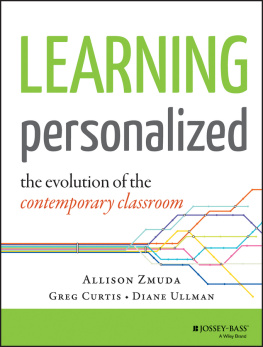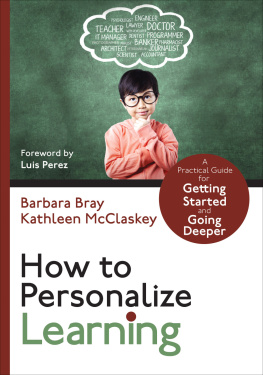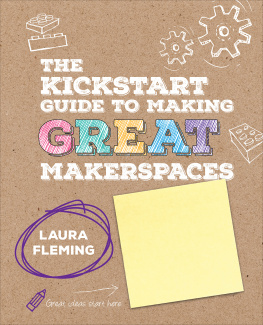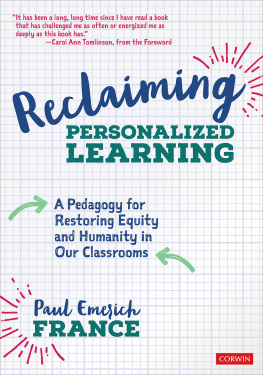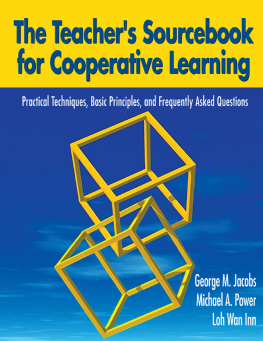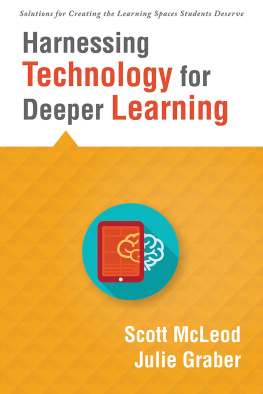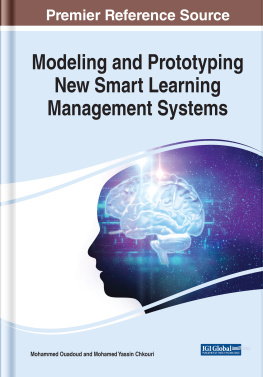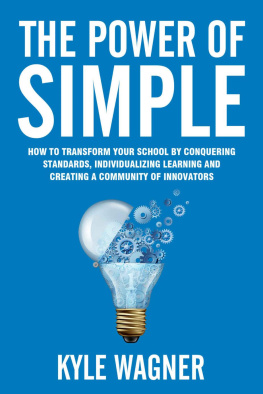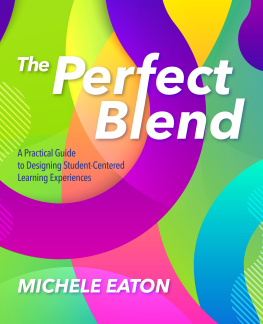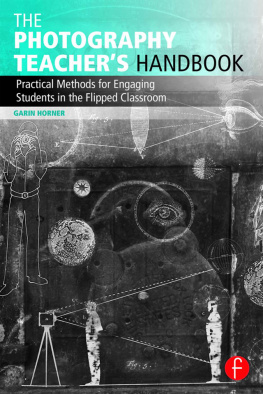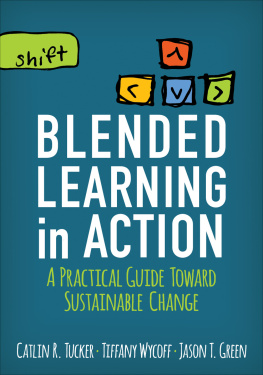
Praise for Learning Personalized
Everyone talks about personalization as a goal but few people have visualized what it can realistically mean. Allison Zmuda, Diane Ullman, and Greg Curtis have done a masterful job of helping us move beyond platitudes toward schooling that really honors learners right to a personalized education.
Grant Wiggins, president, Authentic Education
This important book helps educators go beyond personalized learning as a buzzword to make it a reality in every classroom. An essential tool for every teacher.
Tony Wagner, author of The Global Achievement Gap and Creating Innovators
What a timely book! Educators are struggling with how to make a jump from the more traditional curriculum to one that fosters innovation, collaboration, and rigorous thinking. The authors offer practical strategies, case studies, and numerous charts to help teachers make that transition.
Bena Kallick, educational consultant; cofounder and director, Institute for Habits of Mind
In the 21st Century, every student needs to be self-directed and self-managed. Thats why the time for personalized learning has finally come. Unfortunately, people use the phrase personalized learning without having a common understanding of its elements and milestones. My suggestion: Do not use this term again until you read this book!
Ken Kay, chief executive officer, EdLeader21; founding president, Partnership for 21st Century Skills; coauthor, with Valerie Greenhill, of The Leaders Guide to 21st Century Education: 7 Steps for Schools and Districts
For educators who want to invest in personalized learning to more deeply engage and challenge students, this book offers a balanced overview of the terrain, as well as clear and helpful definitions, structures, and strategies. It rejects the all-or-nothing dichotomy of individualized versus collaborative learning and shares multiple pathways for personalized learning to be woven into the fabric of schools.
Ron Berger, chief academic officer, Expeditionary Learning
Cover image: iStockphoto/perepelova
Cover design: Lauryn Tom
Copyright 2015 by John Wiley & Sons, Inc. All rights reserved.
Published by Jossey-Bass
A Wiley Brand
One Montgomery Street, Suite 1200, San Francisco, CA 94104-4594www.josseybass.com
No part of this publication may be reproduced, stored in a retrieval system, or transmitted in any form or by any means, electronic, mechanical, photocopying, recording, scanning, or otherwise, except as permitted under Section 107 or 108 of the 1976 United States Copyright Act, without either the prior written permission of the publisher, or authorization through payment of the appropriate per-copy fee to the Copyright Clearance Center, Inc., 222 Rosewood Drive, Danvers, MA 01923, 978-750-8400, fax 978-646-8600, or on the Web at www.copyright.com. Requests to the publisher for permission should be addressed to the Permissions Department, John Wiley & Sons, Inc., 111 River Street, Hoboken, NJ 07030, 201-748-6011, fax 201-748-6008, or online at www.wiley.com/go/permissions.
Limit of Liability/Disclaimer of Warranty: While the publisher and author have used their best efforts in preparing this book, they make no representations or warranties with respect to the accuracy or completeness of the contents of this book and specifically disclaim any implied warranties of merchantability or fitness for a particular purpose. No warranty may be created or extended by sales representatives or written sales materials. The advice and strategies contained herein may not be suitable for your situation. You should consult with a professional where appropriate. Neither the publisher nor author shall be liable for any loss of profit or any other commercial damages, including but not limited to special, incidental, consequential, or other damages. Readers should be aware that Internet Web sites offered as citations and/or sources for further information may have changed or disappeared between the time this was written and when it is read.
Jossey-Bass books and products are available through most bookstores. To contact Jossey-Bass directly call\hb our Customer Care Department within the U.S. at 800-956-7739, outside the U.S. at 317-572-3986, or fax~317-572-4002.
Wiley publishes in a variety of print and electronic formats and by print-on-demand. Some material included with standard print versions of this book may not be included in e-books or in print-on-demand. If this book refers to media such as a CD or DVD that is not included in the version you purchased, you may download this material at http://booksupport.wiley.com. For more information about Wiley products, visit www.wiley.com.
Library of Congress Cataloging-in-Publication Data is on file.
ISBN 978-1-118-90479-4 (pbk.)
ISBN 978-1-118-90481-7 (ebk.)
ISBN 978-1-118-90483-1 (ebk.)
FIRST EDITION
Foreword
A learning rush of digital media and global access is seeping into our classrooms, bringing remarkable possibilities and genuine challenges. Certainly most teachers and school leadership are attempting to adjust to the reality that this is a new time requiring new approaches. Yet, without doubt, it is our learners who have already made the transition and in many ways are actually waiting for school to catch up with them.
It seems reasonable to assume that educators throughout the world acknowledge that our teaching approaches are in need of an upgrade. Curriculum and assessment design must reflect contemporary choices if they are to be relevant; otherwise, our students are mired in the past. The question is, How do we make a shift that is responsive to new kinds of learning?
Personalized learning is a viable and dynamic answer. As a burgeoning field of practice, personalized learning has also been in need of operational definition. The term personalized learning has been used perhaps too broadly to cover a whole host of strategies and values. You have in your hands a book providing the very definition we need. Learning Personalized: The Evolution of a Contemporary Classroom provides clarity, insight, and direction for educators committed to implementing programs that engage students in directing their own learning. Three exceptionally talented and experienced educators, Allison Zmuda, Greg Curtis, and Diane Ullman, have collaborated brilliantly in generating new concepts that can inform our actions.
They begin the book with a logical and provocative case for employing personalized learning as an antidote to the inherent boredom of disengaged learners. What is more, they have generated a genuine breakthrough in their detailed analysis of differentiated instruction, individualized instruction, and personalized learning. By extracting the distinctions between these three concepts and the significant implications for implementation of each, the authors have contributed to program decision making. As readers, we see what is possible when learners become self-navigators in determining problems for investigation and projects.
With the potential of becoming a curriculum classic, the authors design model is based on six elements: disciplinary outcomes, cross-disciplinary outcomes, mindsets, task design, audience, and feedback. They detail how each of these elements evolves from the old-style teacher determined and controlled to student-driven direction with the thoughtful guidance of teachers. Strategies and essential questions to garner creative input and involvement are laced throughout the chapters. It is here that we see a genuine revolution afoot.
The questions the authors ask us to pose when designing tasks will directly engage learners in determining demonstrations of their own learning:
Next page
